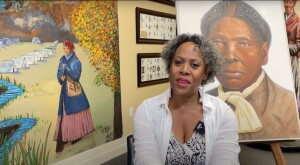The American workforce is changing as boomers increasingly find themselves working alongside millennials, the oldest of which are now adults themselves, and new graduates alike. These generational gaps may reveal a need to improve the way in which we engage with one another in the workplace.
Misconceptions have stunted communication between generations in the office, with experienced workers often assuming others are simply too lazy, and younger generations sometimes ignorant of the benefits and wealth of knowledge a seasoned workforce can offer.
As one IBM study revealed, “The fundamental distinction between millennials and older employees is their digital proficiency. Millennials are the first generation to grow up immersed in a digital world.”
But while younger generations may have an advantage on the technological front, that technology has also limited the ways in which many millennials have developed social skills, particularly in the workplace. When it comes to bridging this generational gap, often lost in translation are the skills and benefits that each group can bring.
Read on to discover lessons that each generation can learn from one another in the workplace.
Lessons from 20- and 30-year-olds
Often fresh out of college and eager to hit the ground running, what those in their 20s may lack in office etiquette, they make up for in fresh and innovative new ideas. Need help converting that PDF document into a Word doc? They’ve got you covered. Confused about the difference between a Snap or a Tweet? They can assist with that, too.
Then there are those in their 30s. Frequently overlooked, the first generation of millennials are able to remember life before the internet, yet young enough to move between new technology and trends with ease. It’s also the first generation to face ballooning education costs and staggering student loan payments, making them less likely to stay with a company in hopes of rising through the ranks the way their parents did. This group is more willing to move around in search of jobs and roles with fairer compensation. In the workplace, this group can approach business challenges with a mix of real life and technological solutions that may include apps to streamline projects and processes.
Lessons from 40- and 50-year-olds
For many industries, this is the most seasoned group in the workforce, chock full of professionals that started their careers before solutions were simply a click away. Comprised of a mix of degreed professionals and those that dove straight into the workforce after high school, this group often serves as leaders throughout their organizations, offering a broad viewpoint and experience that proves vital in real-world situations.
While retirement is still years ahead for most, employers have already recognized the impact that they and boomers will have once they leave the job market. They are a generation whose experience younger workers can greatly benefit from, particularly for those looking to navigate through corporate America. As seasoned workers, many have found their footing, allowing them to dance through office politics and other career hurdles with more grace.
“Generational diversity has its benefits. It’s helpful when people of different age groups work together to pool knowledge and gain new experiences,” explains Kristen Broussard, a communications manager in her organization’s global Learning Technologies and Development department.
She adds that “working with people within different age groups lends to a diverse working environment. It also helps colleagues to grow by being open to other experiences to foster creativity and innovation.”
Lessons from 60-year-olds and retirees
With more and more Americans now forced to remain in the workforce longer, or coming out of retirement to re-enter it, chances are you’ll cross paths or work alongside this generation in some capacity, a benefit younger generations should absolutely take advantage of. Partnering and collaborating with people in this age group is essential for younger workers to make sure that knowledge is transferred.
Tenure also brings invaluable experience. Forbes describes seasoned workers as those that “know their strengths, address their weaknesses and are not afraid of their own shadow. They are team players, know how to lead, can drive business needs and create sustainable outcomes. Not only should you not be overlooking this, but you should be actively seeking out the breadth of knowledge and expertise an older worker possesses.” In short, with time comes skills that aren’t easily shared or replicated.

iStock









